The World of PONTIFUS
The World of PONTIFUS
Set, not in the far distant future or past, PONTIFUS actually was written about the part of the Twenty-first Century that we live in. The technology is not so much new and exotic. The story actually takes place after the opening of the Bering Strait Bridge – on November 15th, 2020! When the story was written I merely projected six or seven years into the future because the ability to build such things already exists. I did then see that one day there might be a need for the freedom-loving peoples of the world to perhaps find a ‘new land’ for their ideas to take root in. What would that look like? How might it happen? Sir Winston Churchill, after evacuating the British army from Dunkirk with civilian boats, talked of never giving up. But it is suspected that he envisioned the noble qualities of English civilization continuing in exile in Canada or Australia as Europe was overrun by the National Socialists, hence my reference to Jeremiah 29. PONTIFUS, in this respect, is a story that is not so much dystopian as it is a story of hope – the hope that great ideas DO endure – and that they will influence future generations!
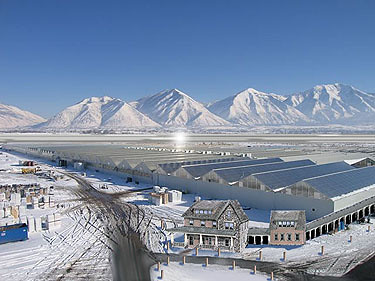
Tundra Greenhouse Farm.
The Ecology of PONTIFUS
I owe a great deal of debt to Frank Herbert, author of the Dune series, in inspiring the compilation of the following material. Inspired by the Oregon Dunes near Florence, Oregon and the Middle East, Herbert created a world where water was truly precious and men came to the region seeking a rare and expensive resource. Looking at what is truly precious in our own time – and what men rabidly seek, I created a picture of the search for such things in our own world.
Much of our science fiction today is absorbed in ideas such as the terraforming of Mars. There are those who seriously see it as the hope for the future of our race. Unfortunately that is a centuries-long process at best if it can be accomplished at all. In the PONTIFUS story the vast wilderness of tundra, muskeg and permafrost is opened up as a home for the world’s millions who yearn to live free. In a transformation not seen since the American prairie was transformed into the breadbasket of the world, Elizabeth Zimmerman O’Malley has created a world of self-sustaining agricultural communities in a place that formerly was not thought capable of supporting them!
The technology she employees is not quite so cutting edge, rather it involves building a vast country of greenhouse agriculture. This actually has precedent in Bethel, Alaska and in Nunavut in Northern Canada where greenhouse agriculture already exists on a limited scale. Using 3D printing technology, Ms. O’Malley creates a cost-effective greenhouse that can enclose enough agriculture to be truly sustainable. The greenhouse complexes are built on the frozen ground where the rich soil is turned over onto an insulating blanket that protects the permafrost beneath. Deep wells are drilled, bringing geothermally heated water to heat and power the complex. The cooled water is used for irrigation and eventually returns to the frozen ground below. The growing season is extended by lighting powered by the geothermal energy.
An expanded petroleum industry primarily provides for the transportation needed in this new world. Wells and pipelines are discreetly a part of the landscape of the North and provide needed energy until such time as new technologies and resources come into use. Just as the great prairies became home to millions of people who left Europe, so the North Country will become home to scores of communities who will build a ‘New World’ much as the American pioneers of the Nineteenth Century did. These small communities will gather around the churches, schools and other institutions they will create and become the Villages that are the backbone of this new world.
Most modern ecologies either treat human presence on the planet as an invasive disease or an outright destroyer. The truth is that we are a part of this complex creation. We shape our environment – and it shapes us. The rigors of frontier life shaped our ancestors as they carved out farms and communities. Our generation, having inherited the fruits of their labors, has grown fat and complaining. Somehow we expect government or some other institution to magically provide what we lack. Our forefathers and foremothers rose to the task of building the things we take for granted.
As in the American West, people fleeing persecution and want will find a new place to build a new life. Unlike the Western expansion of the Nineteenth Century, however, the purposeful enfranchisement of the Yupik and other native peoples will help to ensure that they are not diminished by the sharing of the land. Native interests and ownership are protected and the necessary crossings and infrastructure are built with 100 year lease agreements with lease payments based on the productivity of these improvements flowing back to the native communities.
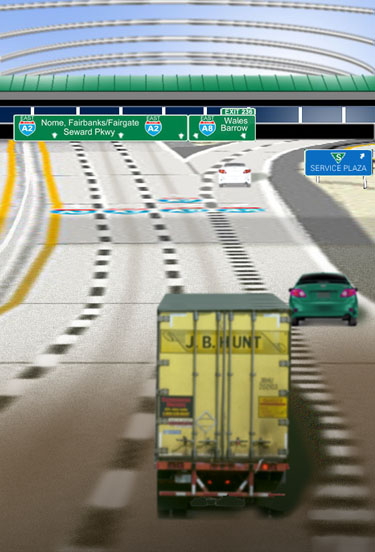
Entering Mainland America Eastbound on A2.
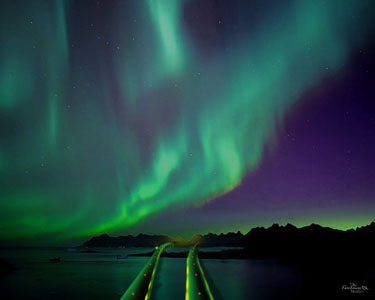
The Bering Strait Bridge under the Northern Lights.
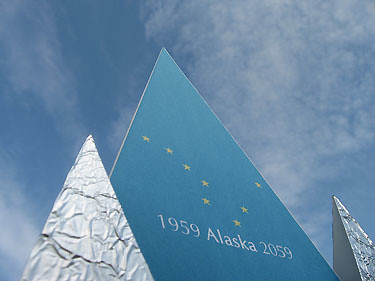
The Alaska Pavilion at the 2059/2060 Centennial Exposition in Fairgate. Fairgate is the new Capital City that was constructed near Fairbanks.

The Galaxy Experience Project, the world's largest physical model of the Milky Way Galaxy, is suspended above a reflecting pool at the 2059/2060 Alaska Centennial Exposition. Visitors ride glass elevators through the model to an observation deck and a revolving restaurant.

The 2059/2060 Alaska Centennial Exposition.[1.]
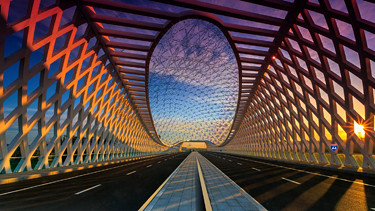
The Interstate A4 Crossing at St. Lawrence Island.
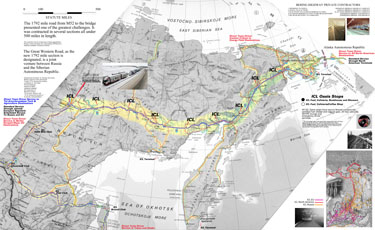
ICL Map of Siberia [click to view larger].
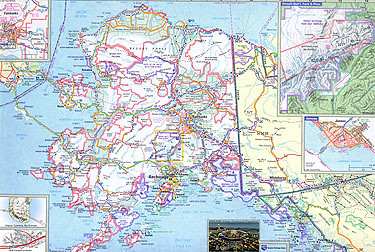
Alaska 2060 [click to view].
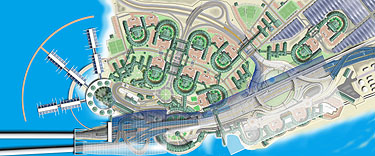
Bering Strait Bridge Complex at Wales. Enlarge [click to view full size]
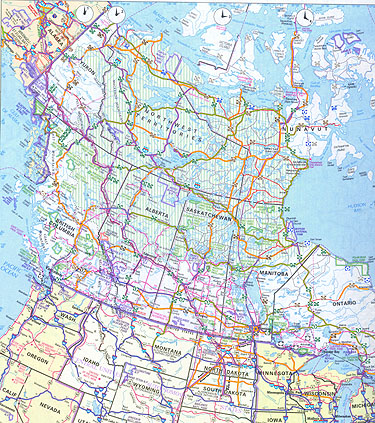
Tundra Farms in 2060. Enlarge [click to view full size]
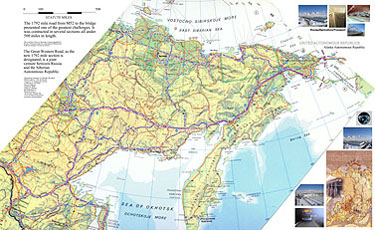
Siberia in 2060. Enlarge [click to view full size]
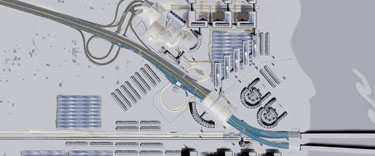
Siberian Terminus of the BSB in 2060. Enlarge [click to view full size]
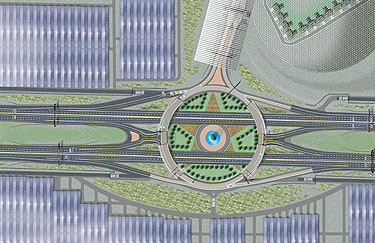
Big Diomede Biosphere Interchange in 2060. Enlarge [click to view full size]
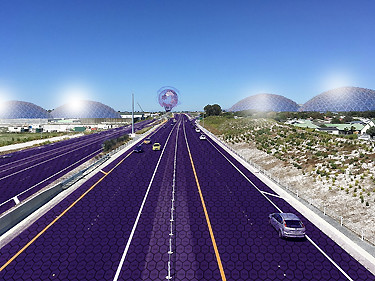
The Town of Salem as seen from Interstate A2 crossing Big Diomede.
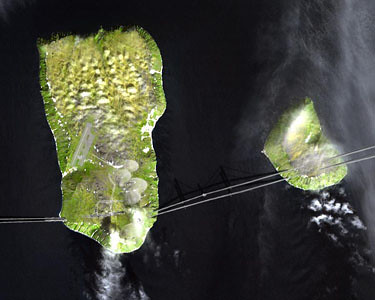
Big Diomede Biospheres as seen from above.
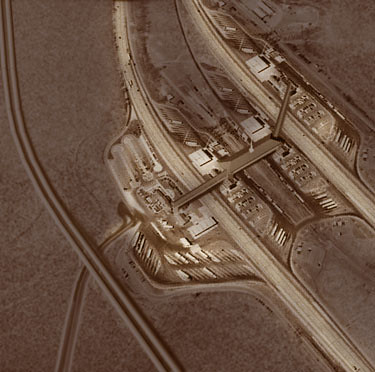
Big Diomede Service Plaza as seen from above.
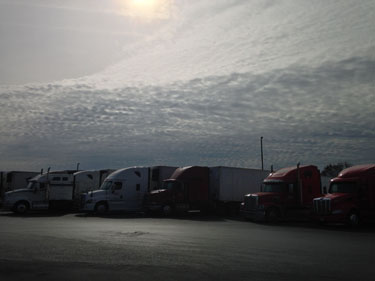
Trucks at Big Diomede Service Plaza.
Bering Strait Bridge Authority [click to read].

Sunlight reflects from the biosphere domes of Big Diomede in this photograph of the Bering Strait Bridge from space.
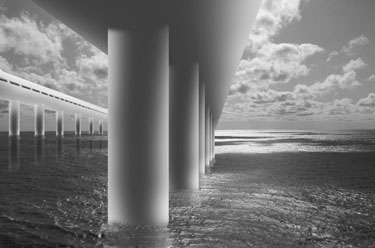
The twin spans of the Bering Strait Bridge. The original span (closest) is the Charles Alton Ellis Memorial Bridge. The second span is the Joseph Baermann Strauss Memorial Bridge.
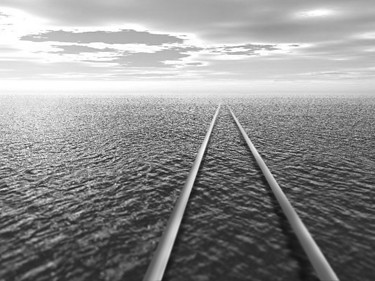
The twin spans stretching to the West and Asia.
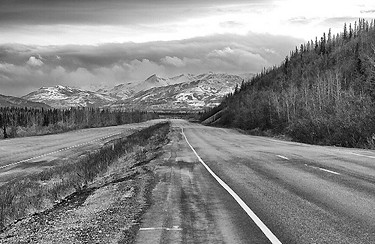
Alaska A2.
New 'Old' Architecture
The Inspiration for the Buildings of Big Diomede
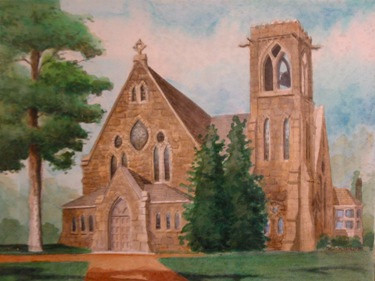
The Church on Big Diomede is based on my painting of the University of Virginia Chapel.

My Grandmother, Lola Dalton Carpenter, designed this window for a stairwell in 1914. I carried it into the Twenty-first Century as a window at the College on Big Diomede.
At the turn of the Century, as the Twentieth Century began, the great world's fairs presented a vision of civic architecture for America's young cities. A beautiful classicism prevailed, inspired by the model of Greek and Roman architecture. As the McMillan Plan transformed Washington DC into a very beautiful city, it put in place a sort of architectural order. The civic buildings of the metropolis all followed the form of Greek and Roman architecture. The great Cathedral and Catholic shrine rose in Gothic and Byzantine forms, thus creating a wonderful order for religious architecture as distinctive.
For Big Diomede, it seemed appropriate to again visit the past for ordering the future. Thus I returned to classicism for the College and Gothic for the Chapel, the precedent being Thomas Jefferson's University of Virginia... a beautiful campus in the Palladian style. Jefferson omitted a place of worship, perhaps by design, but in the 1880's a chapel Designed by Baltimore architect and University alumnus Charles Emmet Cassell was erected. The chapel’s materials, site, and style signify it as a Christian building in contrast to the Academical Village. Upon the chapel’s dedication, Professor Maximilian Schele de Vere proclaimed that while the Rotunda represented “in cold though classic beauty the outlines of a pagan temple,” the chapel aspired to Heaven with its “pointed window” and “flying buttress.”
In 1980 I was married to my beautiful wife in that chapel, about a century after it was first proposed. Thus that building is very special to me. The Zimmerman Stone Mountain Proposal Story is the story of my own proposal! Yes, the Divine sent a Storm! We like to think it would have happened anyway, without the Heavenly pyrotechnics, but it remains a great story.
Grandma's window and Inglenook found their way into the story simply because the images fit the mission, and I love them. She was a student at the Maryland Institute in 1914 and produced most of her work in those years. She married O. F. Carpenter, a successful Madison businessman and painted as an avocation until her eyesight failed in the 1970's. Lola Dalton Carpenter was extremely talented and had studied fashion design. In a later part of the story, yet to be told, a nod to Kris' efforts in this discipline is really a shout to Grandma, who all of us credit with our own creative impulses. My cousin in Oregon is an incredible photographer. My own children are very good too. We all thank Lola Dalton Carpenter for blazing the creative path for us!
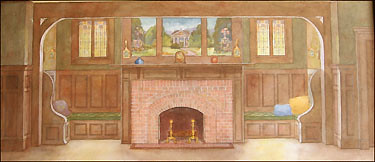
My Grandmother, Lola Dalton Carpenter, designed this ingelnook in 1914. Of course, it was exactly the look I wanted for Kris' house on Big Diomede.

I added the chalk drawings in front of one of my renderings to create the exterior.
Copyright © 2020, The Kirchman Studio, all rights reserved
